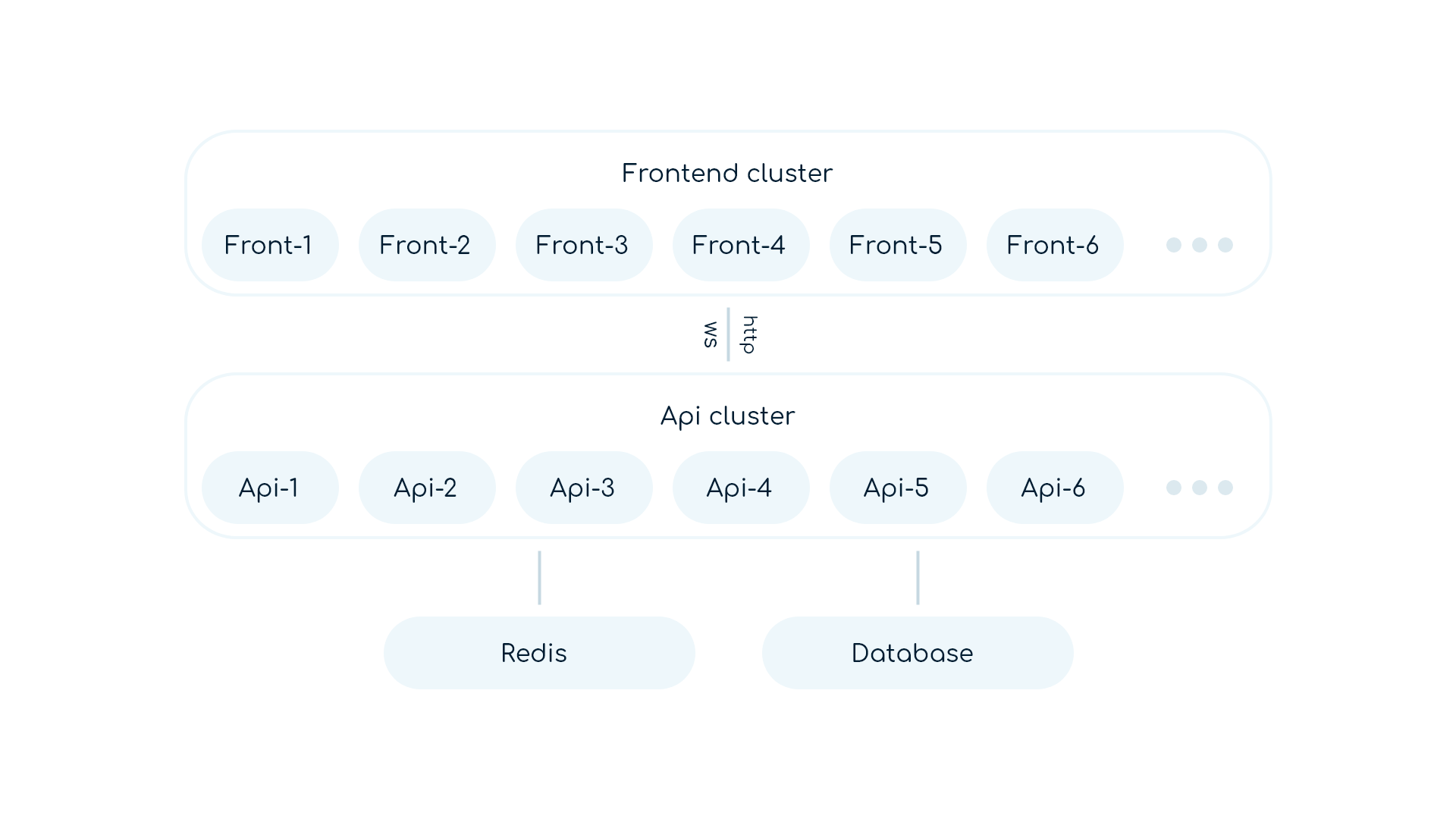Answer the question
In order to leave comments, you need to log in
What stack should be used to organize the deployment and clustering of such a project?
There is a project with this architecture:

Frontend communicates with api via http requests and receives realtime updates via constant websocket connections. Api servers have a single database, and also communicate with each other via redis (mainly for delivering realtime updates via websockets).
The project is not very large. Most likely, one real server for the frontend, one for the api and one for the database will be enough (at first everything will be on the same server). In this regard, the following questions arise:
Answer the question
In order to leave comments, you need to log in
one.
best and easiestis a subjective matter. For me, it's easier without K8S, but for sure, young people will say that it's easier with him.
Most likely, one real server for the frontend, one for the api and one for the database will be enough (at first everything will be on the same server)
Didn't find what you were looking for?
Ask your questionAsk a Question
731 491 924 answers to any question